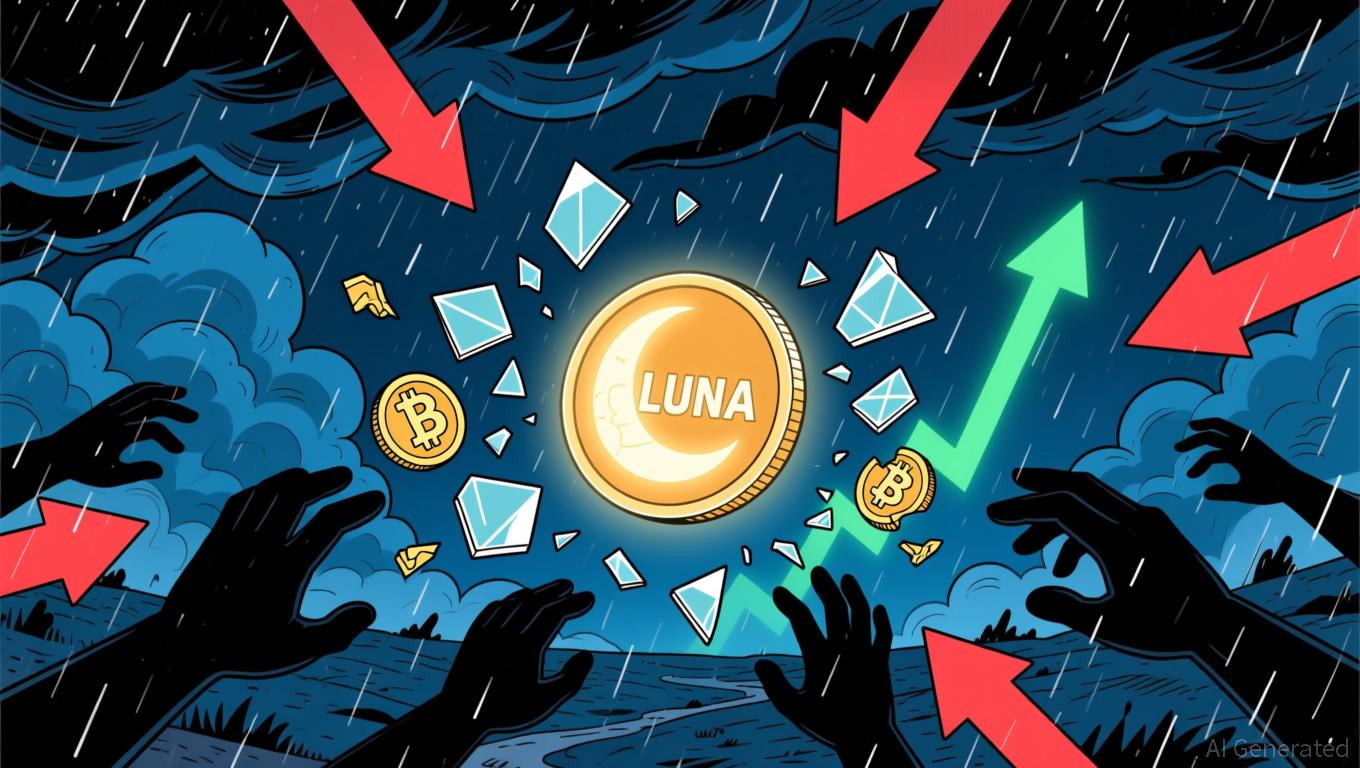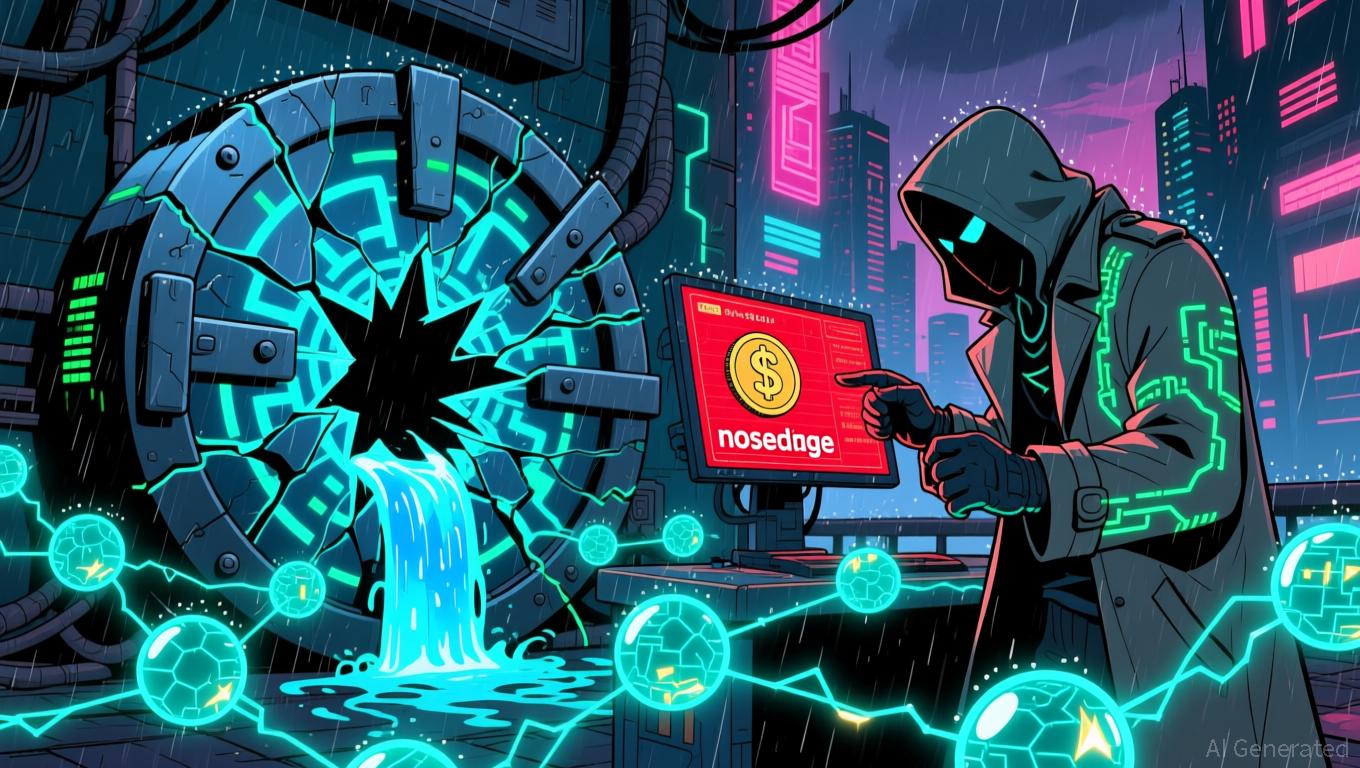The Rapid Rise of ZK Technology and What It Means for Cryptocurrency Markets
- ZK proof ecosystems saw 2025 breakthroughs in scalability, institutional adoption, and on-chain activity, reshaping blockchain infrastructure and crypto markets. - Projects like zkSync Era (27M+ monthly txns) and StarkNet (tripled TVL) demonstrated ZK-rollups' capacity to handle 15,000+ TPS, accelerating Ethereum's Layer 2 dominance. - Institutional giants including Deutsche Bank , Sony , and Nike integrated ZKP solutions for compliance, with Polygon securing $1B+ in ZKP development funding. - ZKP market
Scalability Innovations:
ZK
as the Catalyst for Mass Adoption
Zero-knowledge rollups (ZK-rollups) and zkEVMs have become essential to scaling blockchain networks. For example, zkSync Era, a prominent ZK-rollup, currently
The emergence of Layer 3 (L3) blockchains is further enhancing scalability. Built on top of Layers 1 and 2, these platforms have demonstrated the capacity to process as many as 12,000 TPS in practical tests and are
Institutional Adoption: From Skepticism to Strategic Integration
In 2025, institutional interest in ZK technology has surged, with leading organizations adopting ZKP-based solutions to enhance compliance and operational efficiency. Polygon, for instance, has allocated over $1 billion to ZKP research and development, establishing its zkEVM as a foundational tool for business and institutional applications. This commitment has drawn major collaborators such as Nike, which is
The traditional finance sector is also turning to ZK proofs. Deutsche Bank and Sony have
On-Chain Activity and Market Projections: A New Era of Growth
Key financial indicators for ZK-based platforms highlight their expanding impact. The total value locked (TVL) in ZK rollups has
Layer 3 blockchains are accelerating this momentum. Their demonstrated ability to process
Investment Implications: Navigating the ZK-Driven Paradigm Shift
For those investing in this space, the rapid evolution of ZK technology brings both significant prospects and notable risks. Projects that have managed to scale ZK-rollups or secure major institutional alliances—such as zkSync Era, StarkNet, and Polygon—are in a strong position to gain market traction as the sector evolves. Nevertheless, the industry’s inherent volatility and technical sophistication require a prudent, research-based investment strategy.
The adoption of ZK proofs by traditional financial and enterprise systems also marks a broader move toward mainstream blockchain acceptance. As seen with Deutsche Bank and Sony, ZK’s unique ability to blend privacy with regulatory compliance is transforming institutional engagement. This momentum is expected to build in 2026, with more established companies exploring ZKP-based solutions for international payments, supply chain tracking, and identity management.
To sum up, the explosive growth of ZK technology represents a fundamental evolution in blockchain infrastructure rather than a passing trend. As scalability challenges are resolved and institutional confidence grows, ZK-powered networks are set to underpin the next wave of financial and digital innovation. For investors, the focus should be on identifying projects that merge technical excellence with tangible real-world applications—a benchmark that the leading ZK platforms are increasingly achieving.
Disclaimer: The content of this article solely reflects the author's opinion and does not represent the platform in any capacity. This article is not intended to serve as a reference for making investment decisions.
You may also like
Dogecoin News Today: Mutuum's Safe DeFi Presale Attracts Investment While Dogecoin's Growth Slows Down
- Dogecoin (DOGE) faces waning momentum as investors shift to Mutuum Finance (MUTM), a DeFi protocol nearing $18.9M in presale funds. - 21Shares' 2x Long Dogecoin ETF (TXXD) highlights institutional adoption, but DOGE's $0.175 price stagnates despite Tesla/AMC partnerships. - Mutuum's Phase 6 presale (90% sold) features 250% price growth and Halborn/CertiK security audits, driving FOMO ahead of $0.06 listing target. - With only 5% public token allocation and Q4 2025 roadmap, Mutuum's scarcity model contras

LUNA rises 4.04% in 24 hours despite ongoing downward trend
- LUNA rose 4.04% in 24 hours to $0.075 but remains down 20.13% monthly amid broader market weakness. - Short-term traders capitalized on dips, yet seven-day declines highlight waning investor confidence and lack of Terra network coordination. - Post-2025 Terra-UST collapse, LUNA struggles to regain dominance as stablecoin competitors capture market share. - Analysts warn volatility persists without fundamental upgrades, emphasizing long-term challenges to rebuild trust and momentum.

AAVE rises 1.9% after Founder Reveals ETHLend Relaunch in 2026 Featuring Built-in Bitcoin Compatibility
- Aave founder Stani Kulechov announced ETHLend 2.0 relaunch in 2026, returning to peer-to-peer lending with native Bitcoin collateral. - The upgrade aims to address original ETHLend's liquidity issues using modern infrastructure, MEV protection, and faster on-chain operations. - Native BTC collateral differentiates it from wrapped BTC, potentially expanding DeFi access for Bitcoin holders and enhancing cross-chain interoperability. - DeFi community shows mixed reactions, with AAVE token up 1.9% but down 2

Blockchain’s Defense Dilemma: Tackling Present-Day Attacks and the Emerging Quantum Challenge
- Port3 Network suffered a $14.45M loss after a hacker exploited a BridgeIn protocol flaw to mint and dump 162.75M PORT3 tokens, triggering an 82% price crash. - The attacker burned 837.25M tokens post-sale, while Port3 halted liquidity and deposits to contain the damage, though the token remains at $0.0086. - QANplatform's quantum-resistant QAN XLINK protocol passed a Hacken audit, addressing long-term risks as 65% of Ethereum addresses face quantum vulnerability. - The incident highlights DeFi's dual thr
